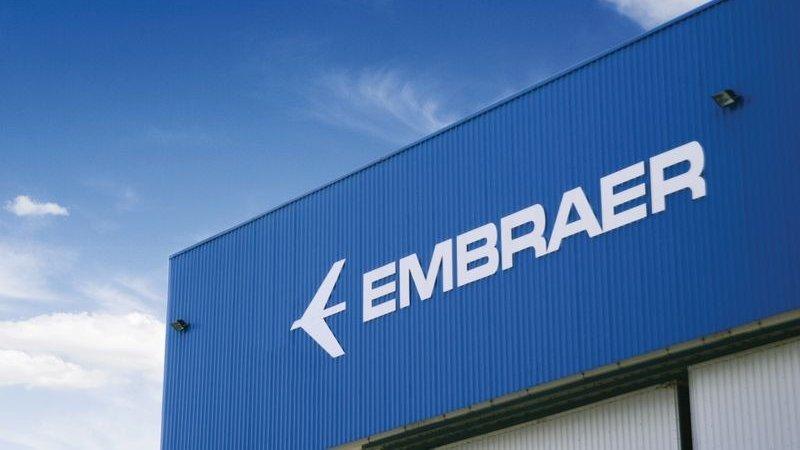Embraer Commercial Eyes Corporate Realignment, Shelves Turboprop

Embraer’s commercial operation has shifted focus to realigning with the rest of the company and conserving cash, with new-product development—including a notional turboprop—put on hold while the business regains its footing amid the Boeing deal collapse and coronavirus crisis, Embraer Commercial Aviation president and CEO John Slattery said.
Speaking with Aviation Week editors on a wide-ranging webinar May 1, Slattery emphasized that his 10,000-person business—carved out for the proposed tie-up with Boeing that the U.S. company walked away from on April 25—will be reshaped to better line up with Embraer’s defense and business aviation units.
“Our mindset is one Embraer, one team,” he said in his first public comments since the Boeing deal fell through. He acknowledged that the one-team approach will require organizational changes. “There’s replication now ... some of the more obvious synergies at the edge, we will review and possibly revert over the next few months.”
The sudden glut of aircraft in global airline fleets and shifting demand trends are triggering landscape-altering questions for all aircraft manufacturers. Chief among them: when will it make sense to invest in new products, and how will the pandemic’s ramifications change what airlines will want? For Embraer, some of the answers are simple, including plans for a large turboprop that will now be set aside, if not scrapped.
“I’m not going to say we’re not going to build [a turboprop], but let’s just be pragmatic here. Now is not the moment to be considering those decisions,” he said. “I certainly don’t see it on the immediate horizon, given what we’re looking at right now. But if something can change on our balance sheet, who knows?”
Slattery emphasized that Embraer’s post-Boeing-breakup strategy does not include seeking out a new partner. He stopped short of saying that Embraer is not open to being approached, however.
“There’s been no outreach by Embraer to anyone” about a possible partnership, he said. But, he added, “I can’t legislate for the inbound calls that could come.”
Slattery acknowledged that the company is “burning cash,” but the company raised $600 million in March and has the “the capabilities” to bring in more. “From an Embraer liquidity perspective, it is not something we’re concerned about.”
Of far greater concern and higher priority than new products or potential partnerships is staying connected with customers, Slattery said. The Boeing saga created “pain” for both Embraer and its commercial customers, in part because of a 40-day “blackout” ahead of the proposed tie-up’s April 25 deadline, he added.
“We’ve come out the other end, and we now have a standalone entity,” he said. “The full organization is effectively autonomous from engineering, operations, IT, procurement, sales, marketing. It’s a stand-alone, end-to-end OEM.”
Turning to the market, Slattery said the consensus he’s seeing among senior air transport executives is that the airline business’s recovery will take three-to-five years, but it will be uneven. Smaller aircraft and shorter haul flying is likely to bounce back more quickly as airlines focus on trip costs over capacity. Long-haul flying, particularly between countries, will likely take longer to recover, especially if the patchwork of responses for protecting passengers from COVID-19 does not become more streamlined, which would provide more comfort to would-be travelers.
“There will be a lot of anxiety around long-haul travel,” he said,
The combination means markets with significant domestic demand, led by China and the U.S., are best positioned to rebound quickly.
“It’s the basic law of economics—supply and demand. You want to be selling a fewer number of seats so that you can better manage the yield,” he said.
The trend means that aircraft in the 75-100-seat range, including Embraer’s E175 and E190-E2 series, are in advantageous spots and “will come back on the inside of the three-to-five-year program.”
Slattery emphasized that while Embraer’s perfect-world commercial lineup includes both the Pratt & Whitney PW1000-series-powered E175-E2 and E-195-E2, the smaller model’s incompatibility with U.S. airline scope clauses means the GE Aviation powered-E175, which is lighter and meets scope restrictions, has staying power. Embraer’s commercial backlog shows 333 aircraft, including 178 E175s, Aviation Week Fleet Data Services shows. It has 151 E190-E2-series aircraft on order but does not have a customer for the E175-E2.
“I would like it to be a uniform fleet,” Slattery said. “But we have an architectural infrastructure down in Brazil that we put in place. It’s a permanent hybrid line. It’s there for as long as we’re going to need it to build E1s and E2s on the same line. Whatever it is we’re allowed to build and produce, whatever the market wants, we’ll build the aircraft that they want.”
Slattery said the decision to terminate a flagging aircraft program “is not a unilateral decision” an OEM makes, but suggested that market forces, underscored by the empty order book, could doom the E175-E2.
“Right now, we’re ruthlessly focused on protecting our cash, and that’s what I’m going to support,” he said. “Sell more E1s, sell more E2s and generate some cash for the company. That’s my focus.”






